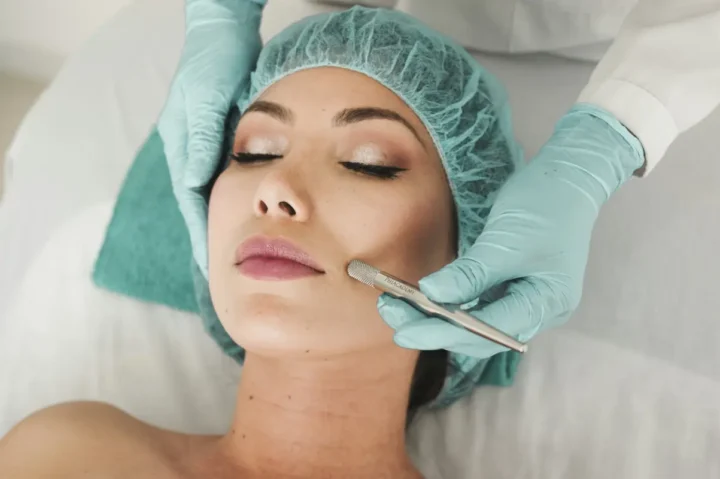How Non-Surgical Facial Tightening Is Shaping Modern Skincare
It’s no secret that attitudes around skincare and beauty have evolved rapidly over the last ten years. As scientific breakthroughs emerge and technology becomes more readily available, people increasingly lean away from invasive procedures and aggressive surgeries in favor of minimally invasive treatments with far less downtime. Non-surgical facial tightening has come to represent this fresh approach. Instead of intensive operations, individuals now demand solutions that allow them to walk out of a clinic and back into daily life, refreshed and more confident.
The numbers don’t lie. Data from professional medical associations suggests the demand for non-invasive anti-aging technologies has skyrocketed in the last decade, making them a cornerstone in modern skincare.
This popularity stretches across various age groups—Gen X and Baby Boomers keen on maintenance or gentle rejuvenation, Millennials and Gen Z looking for prevention and subtle improvement. Instead of chasing transformation, consumers seek support for their natural features, driving the rise and normalization of advanced, minimal-downtime options.

The Science Behind Modern Treatments
The heart of these breakthroughs lies in a deep understanding of skin anatomy. As we grow older, collagen production decreases while existing collagen fibers start to loosen and break down. This results in skin that appears less firm and elastic. Non-surgical tightening treatments target these changes by sending controlled energy deep beneath the surface via ultrasound or radiofrequency.
There, the energy gently heats underlying tissues, stimulating cells to create new, stronger collagen fibers over time. This process leads to firmer, smoother, and more youthful-looking skin, which, most importantly, still looks like you.
Years of clinical research lend absolute confidence to these tools. According to the American Academy of Dermatology, treatments like ultrasound skin tightening prompt the body’s natural repair process without incisions or anesthesia. Patients typically see a subtle, gradual improvement that allows them to keep their skin changes private and natural—a massive draw for anyone averse to dramatic changes. Dermatologists and clinicians emphasize this biomimetic approach, which works with the skin’s systems rather than against them.
Building on these developments, it is through the modern Skin Tightening Device that clinicians can now precisely target the deeper layers of the skin to stimulate collagen production more effectively. These devices allow for customized treatments that adapt to each patient’s needs, ensuring both safety and comfort.
Popular Technologies Transforming Skin Health
Not all facial tightening devices are built the same. The most recognized technologies, such as Thermage and Ultherapy, have become nearly ubiquitous in dermatology and aesthetic clinics. Thermage uses radiofrequency energy to safely heat the deeper, collagen-rich layers of the skin, which can help smooth, firm, and contour areas like the jawline, cheeks, and even eyelids.
Ultherapy, on the other hand, is unique for harnessing micro-focused ultrasound, which enables practitioners to visualize the layers they’re treating and target deeper structures that typical topical treatments can’t reach.
- Thermage: This technology is lauded for its consistency and versatility. It allows for broad applications from the forehead to the neck, with visibly smoother, firmer contours.
- Ultherapy: With precise imaging guidance, Ultherapy can achieve subtle lifting of the eyebrows, chin, and neck, promoting collagen remodeling over time for a gradual, natural effect.
These options are especially suited to those with early or moderate skin laxity who desire impactful results without the disruption or scarring that may come with surgery. With safety profiles established through years of use and research, patients enjoy peace of mind alongside visible rejuvenation.
What to Expect During a Session
- The first step is an in-depth consultation, during which a practitioner examines your skin, discusses your goals, and determines the most suitable technique for you.
- After cleansing and mapping out the target areas, a numbing cream might be applied for comfort, though many devices are well-tolerated without it.
- The procedure itself uses a handheld device to deliver energy in a methodical, carefully-targeted manner. Depending on the areas treated, sessions usually last 30–90 minutes.
- Unlike surgical interventions, there is no need for aftercare dressings or extended time off—most people return immediately to work, family, or social plans.
While you may notice some initial tightening and a healthy, flushed look right afterward, the real magic unfolds as your skin builds new collagen over the upcoming months. For many, the convenience is as valuable as the results: no lengthy recovery, bandages, or hiding out at home.
Safety and Potential Side Effects
Safety is always a term, and one of the leading re-surgical options has become popular. Most people find treatments highly tolerable, experiencing only very mild side effects. These commonly include redness, slight swelling, tingling, or a mildly warm sensation; all typically resolve within hours to a day or two. On rare occasions, there may be minor bruising or tenderness, especially in more sensitive areas.
One reason for the industry’s wide adoption is that these devices must be cleared by regulatory agencies like the U.S. Food & Drug Administration, which means rigorous safety standards and ongoing clinical review are met. Choosing a knowledgeable, certified provider remains the best way to minimize risk and optimize your results.
Who Should Consider Non-Surgical Tightening?
The key factors for someone considering these treatments are age, degree of skin laxity, desired outcome, and risk tolerance. Non-surgical facial tightening is especially effective for individuals with early signs of sagging or mild-to-moderate laxity—think soft jowls, a relaxing jawline, or eyebrows that have lost their youthful arch. Those with more pronounced sagging may need to combine these treatments with other interventions or consider surgery for the most dramatic change.
Medical professionals often stress the importance of customization in treatment planning. Consultations should be personalized and transparent, weighing the pros and cons for each individual’s unique anatomy, lifestyle, and preferences. In aesthetic medicine, this approach is rapidly becoming the gold standard.
Absolute Results and Long-Term Benefits
Results from non-surgical facial tightening do not appear overnight. Instead, they build gradually, mirroring the timeline of natural collagen formation. Most people report firmer contours, softer lines, and subtle lifting within two to six months of treatment, with results that generally last from one year up to two years. For those, annual maintenance sessions are usually suggested.
Clinical for those interested in maintaining their glow, data and patient experiences suggest that non-surgical tightening can become a key part of long-term age management when combined with sunscreen use and a consistent skincare routine. The psychological benefit should not be underestimated either—these treatments often instill confidence and a sense of renewed vitality without the pressure or stigma of having “had work done.”
Latest Trends and News in Facial Tightening
Innovations in non-surgical facial tightening continue to make headlines, especially as the field evolves to meet the diverse needs of today’s skincare consumers. Recent reporting—like this deep dive from CNN—highlights the growth of these technologies and the acceptance of subtle, science-backed enhancement. The conversation has shifted away from stigma or secrecy, empowering people to discuss the details and results of their non-surgical procedures openly.
Social media fuels much of this momentum. Users share before-and-after photos and first-person accounts, helping demystify what happens during and after these treatments. With more devices, personalized plans, and combination therapies on the horizon, the future of non-surgical facial tightening will likely usher in even more accessible and practical options for anyone seeking to look and feel their best.
Frequently Asked Questions
- How long do results last? For most people, the firming and lifting effects last between 12 and 24 months, especially when maintenance sessions are included.
- Is the treatment painful? Most report only a warm or tingling feeling during the session, with discomfort mild and fleeting.
- Are there risks? Side effects are rare and minor. Choosing a certified and experienced provider minimizes any potential complications.
- When will I see results? Some see subtle tightening almost instantly, but visible, long-lasting results appear gradually over the following months as new collagen forms.


